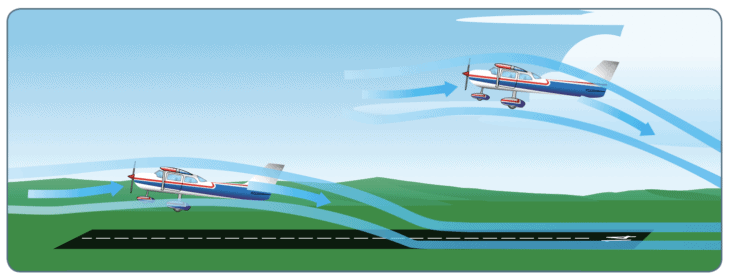What is ground effect?
Technically, it is the change in the airflow around the wings when the aeroplane is near the ground. It is a phenomenon when the lift increases and the drag decrease due to wings being close to the ground. While landing, the aeroplane gets near to the ground because the air pressure between wings and the ground create additional lift and decrease drag. If the pilot lands a little fast, the aeroplane will float down the runway.

Causes of the ground effect
The air accelerates at wingtips, the aft part of wings and downward. The air being pulled up over the wing comes from below, and that flow is continued. These three dimensions can be known as upwash (the air moves upward direction in front of the wing) or downwash (the air being forced downward after the wing). When the aeroplane is close to the ground, there isn’t enough space for the regular upwash and downwash due to the ground being in the way. That flattening changes the relative wind on the wing which changes the amount of produced drag. It also affects how wingtip vortices from off the wings’ end.

These elements together reduce the amount of drag the wing is making. Since the decrease in drag is good for performance, the plane performs better when on the ground.
The effect of the ground effect
The ground effect happens when the aeroplane is close to the ground or any flat surface, which makes it sensitive to the ground effect. Also, the ground effect during taking off is similar to landing, the amount of lift is increased and the drag is decreased.

Ground effect affects aeroplanes in many ways; it’s responsible for increasing lift and decreasing drag during taking off. Aeroplanes with fixed horizontal wings create disturbances on wingtips and behind wings known as vortices. These disturbances are interrupted which may cause an increase in lift and a decrease in drag which creates the sensation that an aeroplane is floating or gliding when landing.
The ground effect is useful during the takeoff. It reduces the speed of the airplane stall. Airplanes can stall if they are unable to produce a sufficient amount of lift.

No hay comentarios:
Publicar un comentario
Espero atento tus comentarios